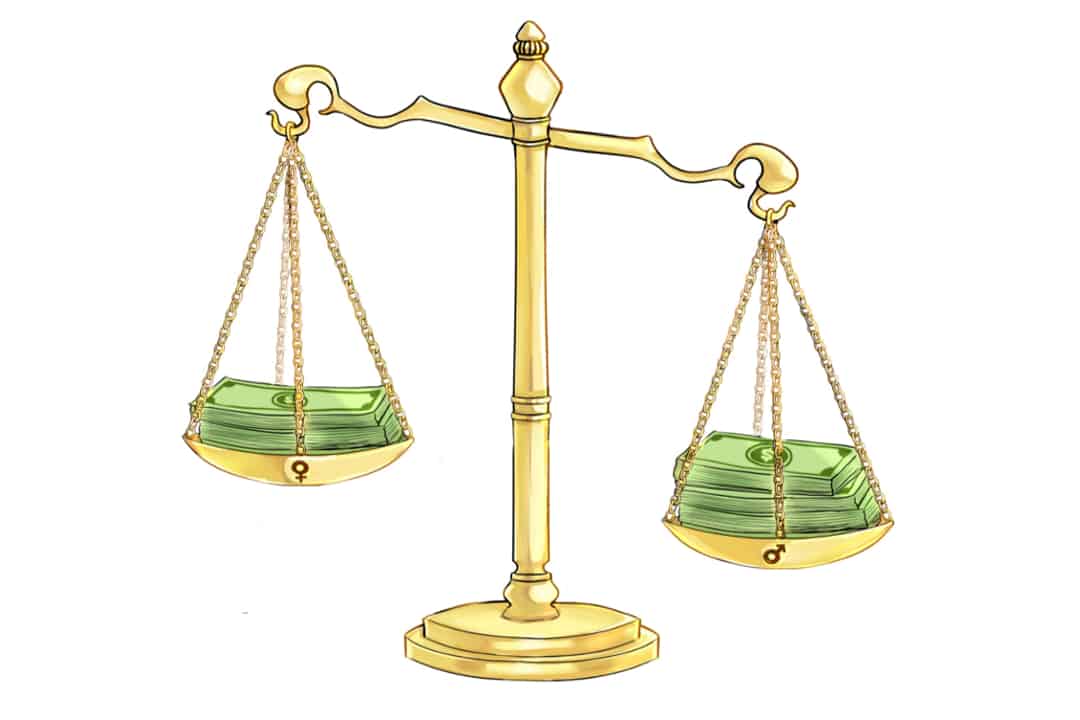Vicky Sunohara has lived the life that many athletes can only dream of. During her illustrious career she won Olympic gold twice and she won the International Ice Hockey Federation Women’s World Championship seven times. She has remained engaged in her sport since her retirement in 2008 through mentorship programs and as the current head coach of U of T’s Varsity Blues women’s hockey team.
However, throughout her years of experience in hockey, Sunohara has noticed a glass ceiling for women players. “The national team… university athletes, they put in just as much time and effort as our male counterparts, but there’s not that opportunity to make money,” Sunohara said in an interview with The Varsity.
Sunohara is not the first woman athlete to feel undercut in her sport. It was only during the ‘60s and ‘70s that women in North America began to gain equal opportunity in athletics. However, even after the doors to sports clubs and societies opened for both genders, the public still struggled to allow women to participate in ‘manlier’ sports, or even portray them separately from their sexuality in the news and other media. Carling Bassett, for example, one of the best tennis players in Canada’s history, faced continuous sexual objectification throughout her career in the ‘80s, with interviewers prioritizing questions about her preference in boys over the documentation of her impressive stats.
Needless to say, women’s sports have historically been underappreciated and overlooked, in every country and at every level.
Recently, however, the tides seem to be turning. Nike released a viral ad campaign in February that celebrated women athletes in every stage of life and ability. In July, the US women’s soccer team won its fourth FIFA Women’s World Cup. And the International Olympic Committee (IOC) has increased the number of women in IOC Commissions by 98 per cent since 2013. It seems that there are more opportunities than ever for women in athletics.
But many argue that these campaigns and perceived progress are masking and oversimplifying an issue that runs deep within all levels of sport. The lauded Nike campaign, for example, was soured when a New York Times op-ed revealed that the company reduced pay for their sponsored athletes who were pregnant.
The US women’s soccer team gets paid less than their male counterparts, despite winning more games and generating more earnings. The 98 per cent increase of women in IOC Commissions still accounts for less than half of their total members. And just this past May, the Canadian Women’s Hockey League disbanded after 12 seasons, due to an “economically unsustainable” business model.
All of these little side-stories and road blocks undercut the greatness of these women’s feats of athleticism, and pervade all levels and types of sport. What does it mean for the prospects of aspiring women athletes around the world, including at U of T, when their experience of sport is riddled with misogynist connotations and low expectations of success and ability? If people aren’t viewing your athleticism as elite, can your passion be a viable career option, or are women being forced out of high-performance athletics because of the public’s outdated and misguided beliefs about the nature of women’s sport?
Sunohara, among many other professionals, thinks that something has to be done. “I think that the players are doing the right thing,” she continued. “On the ice they’re trying. They’re looking for the best — the best training, the best coaching… But you know for the big picture — for a professional league, a sustainable league, it really is hard to say exactly what it’s going to look like.”
These systemically-perpetuated notions also actively jeopardize the future careers of student athletes, including our own Varsity Blues. And it’s not societal attitudes alone that prevent women athletes from competing on equal ground; it’s the actual economic structures that was built upon such misguided ideas. In US universities in the National Collegiate Athletic Association, Division I, for example, women’s teams regularly receive just 41.4 per cent of the money spent on salaries for head coaches, 36.4 per cent to fund recruitment initiatives, and 39.6 per cent of the total budget to fund athletic expenses. These limited resources present a challenge for the growth of women’s sport within schools, and hence for the success of the athletes after graduation.
So what’s the solution? For the US women’s soccer team, it’s a lawsuit for equal pay. For Nike-sponsored athletes like Olympic mid-distance American runner Alysia Montaño, it’s speaking up to the media about unjust practices. In every case, it seems to be exposure of the misogynistic underbelly of organized sport through increased coverage and communication. Athletes are starting to raise their voices against the systemic misogyny, and audiences need to amplify their calls to action through public support of the cause.
Audiences also need to be explicit in their interest in women’s professional sports in order to increase its economic success. University of Southern California and Purdue researchers conducted a 20-year study that shows that women’s sports coverage pales in comparison to men’s, and is even on the downturn. This means that current women athletes will get paid less, and future women athletes may find it harder to identify idols or see a viable athletic career for themselves. We, the public, can create change simply by choosing to watch women’s sports, which sends a message to sports media networks. If attitudes change at the professional level, the effects can trickle down to the high school and collegiate levels as well.


